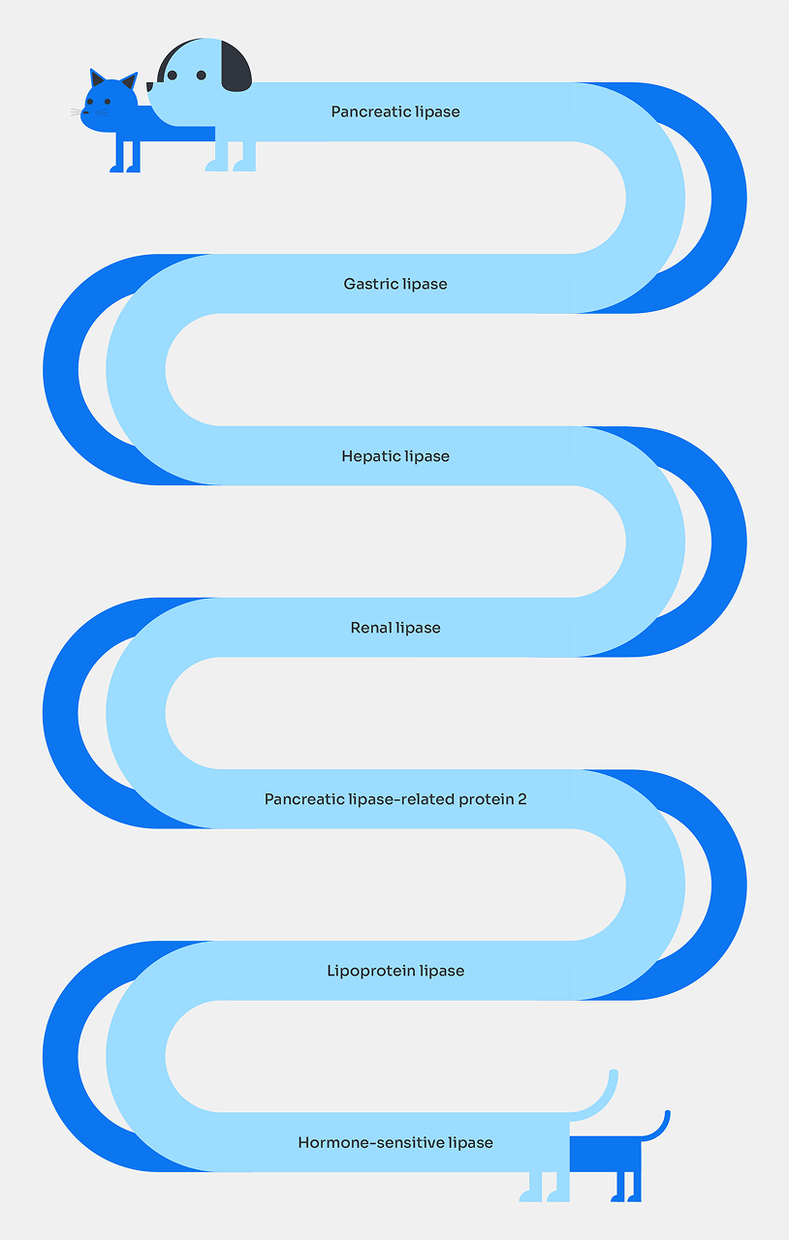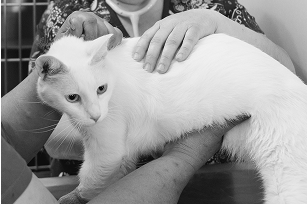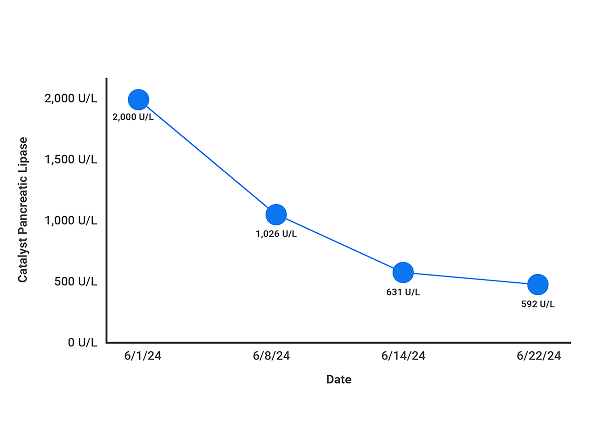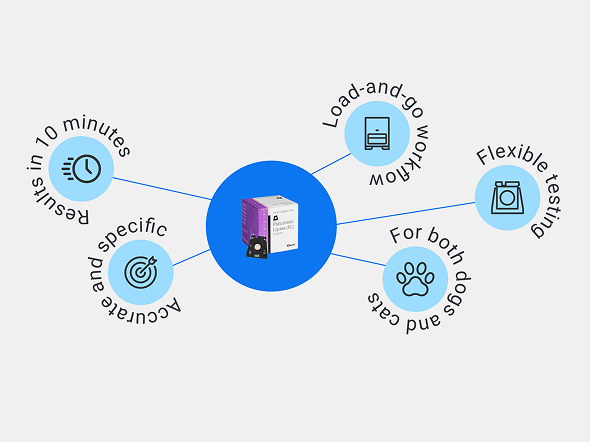Is it pancreatitis?
There’s only one way to know for sure.
Diagnosing pancreatitis is challenging because its clinical signs can be subtle, nonspecific, and often resemble other conditions. The only way to be certain is with a test that specifically measures pancreatic lipase.

What’s the origin story?
Diagnosing pancreatitis is challenging because its clinical signs can be subtle, nonspecific, and often resemble other conditions. The only way to be certain is with a test that specifically measures pancreatic lipase.
Lipase can come from many sources.

4 key risk factors for pancreatitis.

Breed
Some dog breeds are predisposed to pancreatitis, such as miniature schnauzers, Yorkshire terriers, cocker spaniels, and other terrier breeds.

Diet
In canine patients, fatty foods and dietary indiscretion can lead to pancreatic inflammation.

Medications
Certain medications like azathioprine and phenobarbital have been shown to increase risk of pancreatitis.

Medical considerations
Concurrent diseases, like hypotension, neoplasia, and Toxoplasma gondii, as well as trauma to the pancreatic tissue can increase risk.
The pancreas becomes a ticking clock.


Recovery begins with diagnosis.
Pancreatitis is the most common exocrine pancreatic disease in both dogs and cats. A successful diagnosis is based on a combination of clinical suspicion and diagnostic results—and every moment matters.1,2
- Chronic pancreatitis can have acute flare-ups.
- Comorbidities often present alongside pancreatitis.
- Pancreatitis and GI disease can look similar—differentiation is crucial.
- Imaging is needed to evaluate for complications, like duct obstructions and tumors, and to evaluate the GI tract for possible obstruction.
References
- Walton SA. Diagnosing acute pancreatitis in dogs. Today’s Vet Pract. 2020;10(1):46–54. Accessed March 26, 2025. www.todaysveterinarypractice.com/hepatology/diagnosing-acute-pancreatitis-in-dogs
- Steiner JM, Williams DA. Feline exocrine pancreatic disorders. Vet Clin North Am Small Anim Pract. 1999;29(2):551–575.
